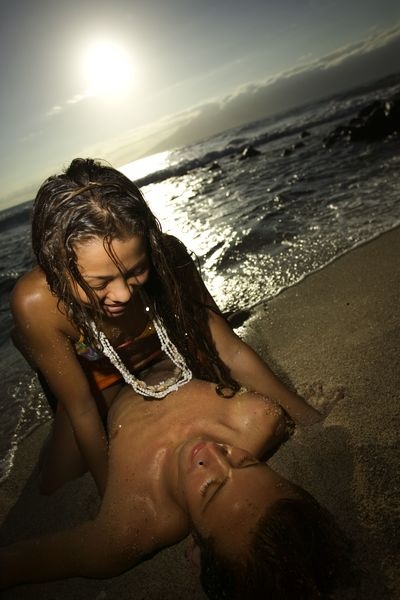Is Polynesian love the same as that in Western European and North American cultures? For a long time, love was considered an exclusively Western concept. According to Western European and North American scholars, ethnographic studies of love add little value to understanding “Western” culture and behavior in love.
However, the purpose of cultural anthropology is to challenge the conventional Western understanding of love. As anthropologists Nelson and Jankowiak noted,
“A principle objective of anthropology is to challenge cultural stereotypes and, through participant observation, bring to light the differences between what people do and what they claim to do.”
Jankowiak, W., & Nelson, A. J. (2021). The state of ethnological research on love: A critical review. In Mayer, C. H., & Vanderheiden, E. (eds). International handbook of love: Transcultural and transdisciplinary perspectives, 23-39.
Cultural Anthropology of Love in the South Seas
Cultural anthropologists began to pay attention to Mangaia and Samoa in the South Seas in the second half of the 20th century. These two islands are in the Central Pacific in the South Seas. Mangaian culture was interesting in many regards.
Unfortunately, the population of those islands and the number of people representing those cultures have been diminishing in recent decades. Nonetheless, such a comparison with other cultures, which we regard as modernized societies, is necessary in order to better understand the cultural diversity of love.
Let us consider the case of Mangaian love. The early studies of American cultural anthropologists Margaret Mead and Marshall Sahlins and the Swedish anthropologist Bengt Danielsson documented the cultural life of Polynesians in the South Seas.
How Anthropologists Portrayed Sexual Love in Early Polynesian Studies
Those studies sent the message that the islanders didn’t seem to have romantic ideas or emotional experiences of love. Those anthropological observations downplayed affection in Mangaian men’s and women’s relationships. They tend to minimize love emotions in accounts of Polynesian life (see for review, Karandashev, 2017).
Mangaian’s intimate relationships were reduced to sexual obsession and a series of one-night stands. Endleman (1989) summarized those findings as follows:
“Sexual activities [on Mangaia] approach being a national pleasure, in which both males and females participate enthusiastically…. There is no indication whatever of anything at all like romantic love involved, only sexual attraction. All the Mangaians place great value on erotic technique, none on any affection or caring between sexual partners, preceding sexual encounter.”
(p. 57).
What Was Real Love in Polynesian Mangaia?
The later studies of the 1970s through 1990s showed that love among Polynesian Mangaians was more complex and sophisticated (e.g., Gerber, 1975; Freeman, 1983; Harris, 1995; Levy, 1973).
The authors recorded the diverse lexicon of love words that the Mangaians had:
“Maoris have heaps of words for falling in love, but the Europeans have only one”
(Harris, 1995).
As I noted in another post, the Mangaian word inangaro is interpreted broadly as “needing, liking, wanting, and loving.” Referring to a male-female relationship, the word “inangaro” expresses the feelings that inside you. It is the real love for someone from within, from your heart. These feelings make young boys and girls want to get married. A premarital period gives them an opportunity to know this.
Freedom of Sexual Intimacy in Polynesian Mangaian Love
Mangaians, in their heterosexual relationships, are free and open in their sexual expression both before and after marriage. Polynesian attitudes toward sexual freedom and the pursuit of sexual pleasure are culturally normative. For example, when girls and boys like each other, they usually sleep together. They want to enjoy themselves.
Western missionaries made vigorous and sustained efforts to indoctrinate the opposite disposition toward love. Nevertheless, indigenous people in Mangaia and other Pacific societies retained their cultural views on sexual pleasure. Religious missionaries were able to convert them to Christianity. Nevertheless, Polynesians followed their ancestors’ beliefs that sex is a natural and pleasurable aspect of life. They believed that premarital sex, if it is practiced discreetly, is an appropriate part of post-adolescent and premarital times.
The Courtship of the Young Mangaian Boys and Girls
Ethnographic observations showed that the Mangaians’ courtship was not just the practice of experimenting with physical and sexual intimacy. During that time, girls and boys were establishing close emotional relationships. The courtship process could remain chaste for weeks or months, while the development of emotional intimacy in many cases precedes sexual engagement.
It was essential that the interest, desire, emotions, and sexual intimacy be reciprocated. Mangaians believed that intimacy could be achieved only with the willingness of both a girl and a boy to consent to physical and emotional contact. In many conversations during courtship, boys and girls focus on how each person feels about their relationship. Such communication gave the lovers a chance to see how real and strong their feelings were between them (Harris, 1995).
